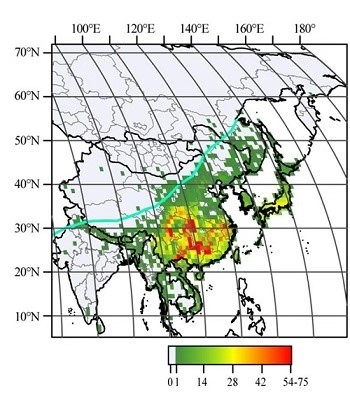A research paper titled “Identifying long-term stable refugia for relict plant species in East Asia” was recently published on line by the Nature Communications, a sub-journal of Nature. This paper has been completed by a multi-national joint research group, of which the project group led by Professor Yang Yongchuan from the School of Urban Construction and Environmental Engineering forms a part. This paper identified the important refugias for “living fossil” plants in the Northern Hemisphere. The first author of the paper is Cindy Q. Tang, a specially-appointed professor of Yunnan University, and a long-term partner of the research group. Professor Yang Yongchuan of Chongqing University is the corresponding co-author, and Dr. Qian Shenhua is a co-author (7/45). This Project has been supported by the earmarked national fund for fundamental scientific and technological work and Chongqing Natural Science Foundation.
Gingko, metasequoia, Chinese cypress and other “living fossil” plants are widely distributed in East Asia. Those plants used to be widely distributed in the Northern Hemisphere in the Tertiary Period (about 66 million to 2.6 million years ago). Due to influence of the Quaternary Ice Age, those plants only survived in a number of “refugias” scattered in East Asia, North America and Southwest Europe. In addition to analysis of the distribution data and fossil evidence of a large number of “living fossil” species, the research also re-built the climatic refugias for those plants. Research findings indicated that the humid sub-tropical zone and warm forest zone that span from Southwest China to Northern Vietnam and to Central Japan are the core refugias of “living fossil” plants. Given the global climatic change, the East Asia Sub-tropical Zone and warm temperature zone around Southwest China will become the long-term and stable climatic refugia for the “living fossil” plants. As such, this region is of extremely significance for ecological conservation of “living fossil” plants. This research is of considerable reference value for layout planning of the natural reserve in the future.
The research findings were published on line by Nature Communications (IF=12.353) on October 26, 2018. Link of the paper: https://doi.org/10.1038/s41467-018-06837-3; the research is another major breakthrough of Chongqing University in publication of high-standard papers on ecological disciplines, following the paper published by the project group led by Professor Yuan Xingzhong of Chongqing University in Science in 2008.
Professor Yang Yongchuan of Chongqing University and Professor Cindy Q. Tang of Yunnan University have been in collaboration for 10 years, and both of them have been engaged in research of conservation ecology for relict plants of the Tertiary Period unique to China for a long time. The two have published a number of papers in international mainstream journals such as Biological Conservation, American Journal of Botany, Forest Ecology and Management and Oryx, and have gained remarkable international influence.

Fig. (1) Gingko and metasequoia, two typical “living fossil” plants: (A) Gingko; (B) Natural population of gingko (in Nanchuan, Chongqing); (C) Metasequoia; (D) Natural population of metasequoia (in Lichuan, Hubei)

Fig. (2) Species diversity pattern of “living fossil” plants in East Asia; the light blue boundary is the boundary of summer monsoon (humid climate)

